Inventions
Rejuvenique Facial Toning Mask
Still being made and sold! Get yours via the Amazon link below!
Posted By: Paul - Tue Jan 04, 2022 -
Comments (3)
Category: Beauty, Ugliness and Other Aesthetic Issues, Body Modifications, Inventions, Technology, Twentieth Century, Twenty-first Century
The Mailomat
Very handy for Xmas rush!Article source: Oakland Tribune (Oakland, California)10 Dec 1939, Sun Page 59
Another good article here, with more pics.
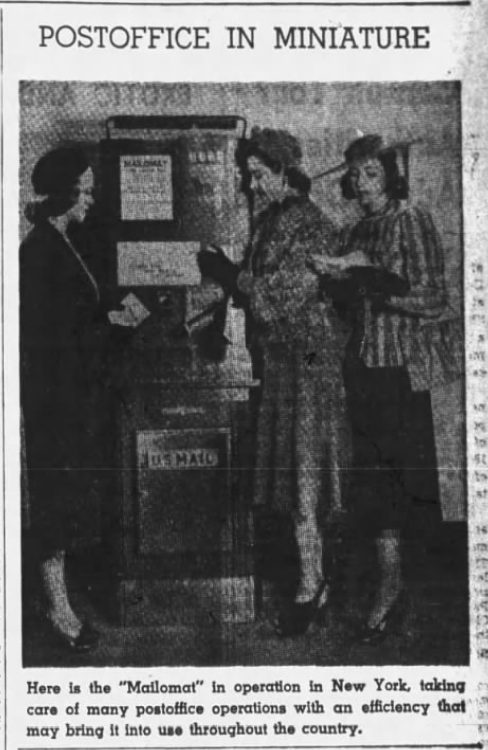
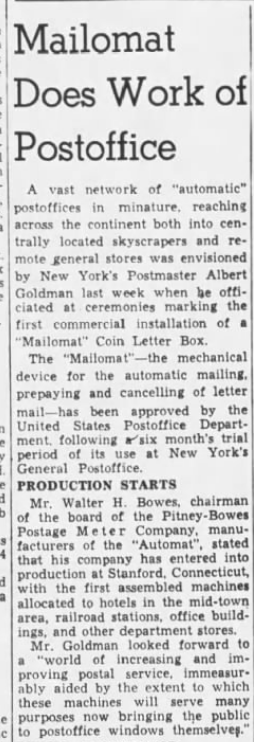
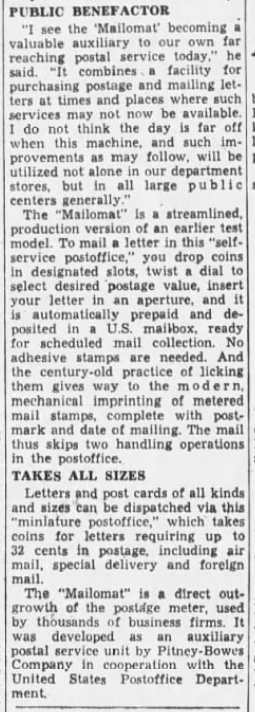

Posted By: Paul - Fri Dec 24, 2021 -
Comments (1)
Category: Inventions, Technology, 1930s, 1940s, Postal Services
The Panasonic Audio Egg


Posted By: Paul - Tue Dec 21, 2021 -
Comments (6)
Category: Domestic, Excess, Overkill, Hyperbole and Too Much Is Not Enough, Inventions, Music, Eggs, 1960s
Method of executing a tennis stroke
In 1999, Kevin and George Repper were granted a patent (No. 5,993,336) for a "method of executing a tennis stroke". The method consisted of hitting a tennis ball while kneeling on the right knee — that knee being protected by a kneepad.This raises two questions. First, how did they possibly obtain a patent for this? And second, why did they bother getting a patent for this? Did they seriously expect other tennis players to license this method from them?
I don't know the answer to the first question, but I have a hypothesis about the second. Some googling reveals that George Repper was a patent attorney while his son, Kevin, was on a high-school tennis team. So my guess is that the patent was some kind of father-son bonding experience, with the father showing his son how to obtain a patent. And it seems like the son is also now a patent attorney.

Posted By: Alex - Sun Dec 19, 2021 -
Comments (0)
Category: Inventions, Patents, Sports, 1990s
Hotel Automat
Posted By: Paul - Sun Dec 19, 2021 -
Comments (4)
Category: Inventions, Technology, Hotels, 1960s
The Beachette
Esther Brown was granted a patent (No. 2,266,684) in 1938 for the "beachette," which was a wearable beach umbrella. A beachgoer could wear the fabric of the umbrella as a skirt/cape/hat combo. The pole doubled as a cane. When they got to the beach it could all be assembled into an umbrella.The problems I see: a) you've still got to carry the pole; and b) I bet assembling/disassembling the thing was a nuisance.
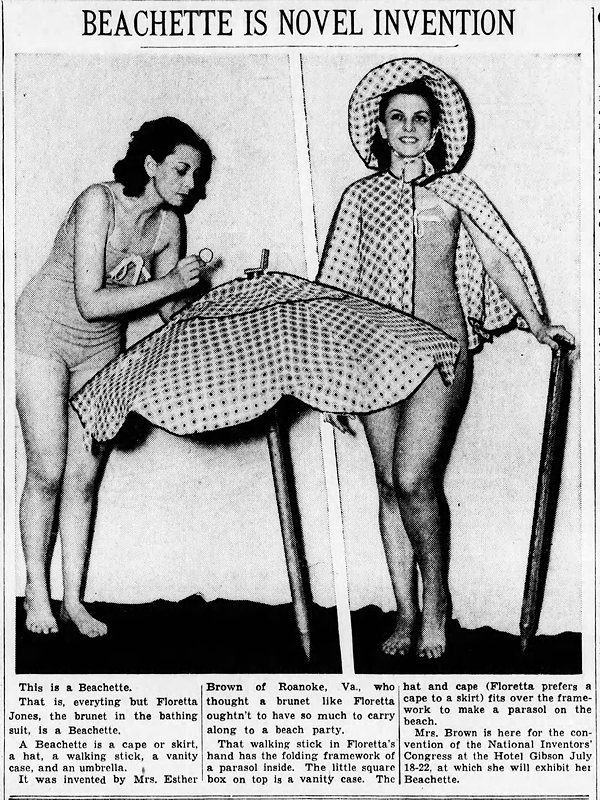
Cincinnati Enquirer - Jul 8, 1938
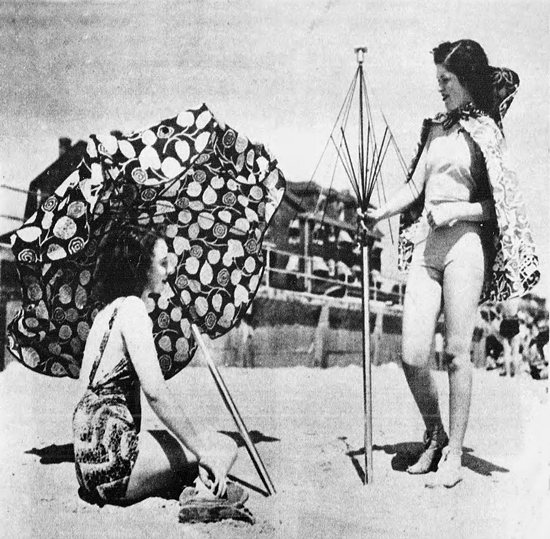
Pittsburgh Press - Sep 25, 1938
Posted By: Alex - Mon Dec 13, 2021 -
Comments (1)
Category: Fashion, Inventions, Patents, 1930s
Rain Goggles For The Motorist
I'm surprised someone isn't selling a battery-operated version of these today as a gag gift. Wouldn't even need to be for motorists. Perfect for anyone out for a stroll in the rain.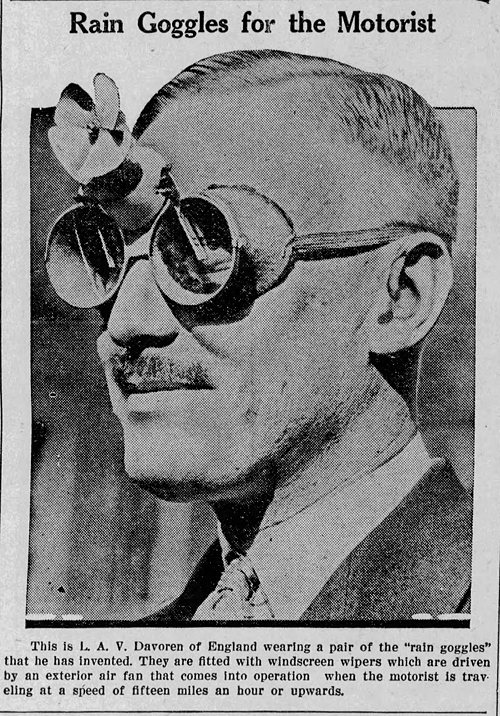
The Oklahoma Freedom Call - Feb 8, 1934
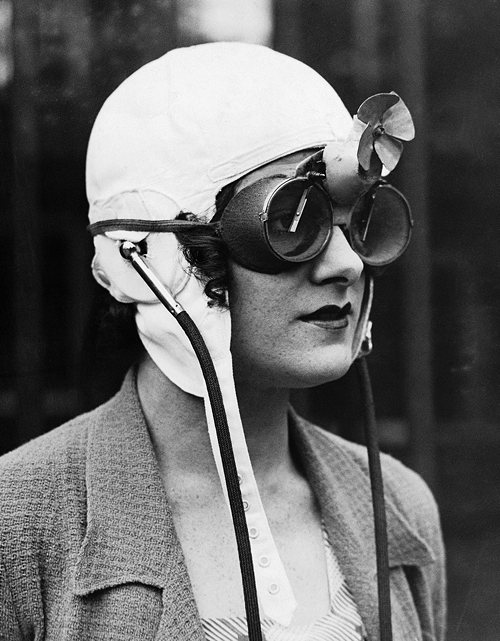
"Miss Paddie Naismith, noted English racing chauffeur, is shown wearing the very latest in motor modes, rain goggles, with wipers 'n' everything. A small fan, you can see it over the bridge of the nose, operates the wipers when the car is travelling at speeds in excess of 15 M.P.H. Its inventor is L.A.V. Davoren of London." — International News Photo, Oct 1933
image source: reddit
Posted By: Alex - Tue Dec 07, 2021 -
Comments (3)
Category: Inventions, 1930s, Weather, Eyes and Vision, Cars
A History of Mechanical Horses
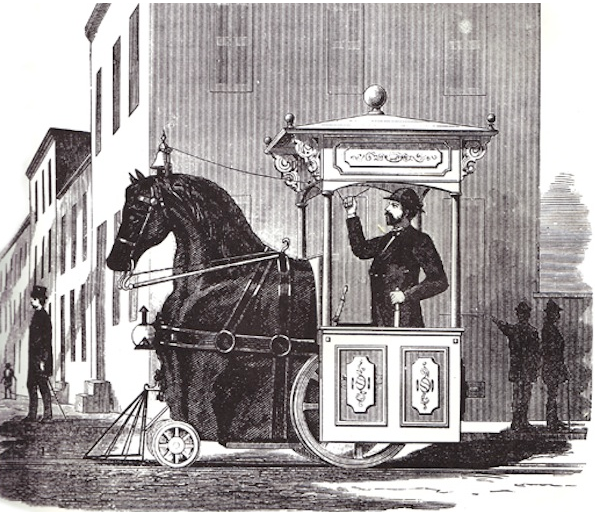
Read the piece here.
There should be a separate article on mechanical horses in literature. My favorite one occurs in these two novels by Roger Zelazny.


Posted By: Paul - Tue Nov 30, 2021 -
Comments (1)
Category: Animals, Inventions, Literature, Fantasy, AI, Robots and Other Automatons, Nineteenth Century, Twentieth Century
The Patented Carrot Rectal Dilator
In 1927, the Canadian patent office granted an unusual patent (CA 259317) to George L. Kavanagh. It was unusual because, while most patents describe some new type of gadget or gizmo, Kavanagh's invention simply consisted of a method of using a carrot.The problem Kavanagh had set out to solve was that of constipation in the elderly. The way he saw it, our rectums tend to grow more inelastic and shrunken as we age, and this leads to constipation. The solution, he concluded, was "gently dilating the anus and rectum until the organs are restored to their youthful size."
But what could be used as a dilator? Preferably something inexpensive and readily obtainable. That made him think of carrots.
A summary from his patent:

An added benefit of carrots, he noted, was that they come in a variety of different sizes. This would allow one to start with small carrots and work up to larger ones "until the desired result is obtained."
Unfortunately, Kavanagh submitted no drawings with his patent. But I did find a chart that provides a size comparison of different types of carrots, which could be potentially useful for anyone who wants to try out Kavanagh's method at home on an elderly relative.

image source: 123rf.com
Update: Kavanagh also got a US Patent (No. 1,525,505) for his invention.
Posted By: Alex - Wed Nov 24, 2021 -
Comments (3)
Category: Health, Inventions, Patents, Vegetables, 1920s
The Jankó Keyboard
Short video first, then a longer one.Wikipedia page here.
Posted By: Paul - Sat Nov 06, 2021 -
Comments (1)
Category: Inventions, Music

| Who We Are |
|---|
| Alex Boese Alex is the creator and curator of the Museum of Hoaxes. He's also the author of various weird, non-fiction, science-themed books such as Elephants on Acid and Psychedelic Apes. Paul Di Filippo Paul has been paid to put weird ideas into fictional form for over thirty years, in his career as a noted science fiction writer. He has recently begun blogging on many curious topics with three fellow writers at The Inferior 4+1. Contact Us |




